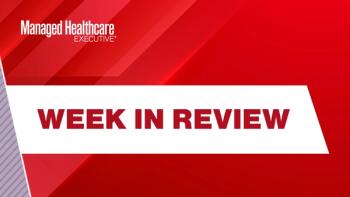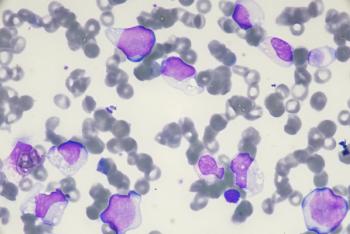
Reducing HACs
Reducing hospital-acquired infections has become a top priority for hospitals in the face of new penalties from CMS.
It’s an irony that one of the most serious risk factors for deteriorating health in the U.S. is admission to a hospital. In fact, one in 25 people admitted to hospitals acquires infections during their stay that were not present when they first sought medical intervention, according to the
Hospital acquired infections (HAIs) caused illness in 722,000 patients in 2011, resulting in loss of life in 75,000 cases. Other causes of potential harm are not so easy to quantify. As Ashish Jha, MD, professor of health policy at the
Jha says until recently, healthcare payment policies have, through a perverse incentive, reinforced this reality. That’s because hospitals previously were able to bill payers for treating Hospital Acquired Conditions (HACs), sometimes at rates higher than the initial condition that brought the patient in for medical care.
In an effort to flip that model, the Centers for Medicare and Medicaid Services (CMS) created the
Penalties for hospitals
The HAC Reduction Program revolutionizes the payment system for patient care in a way intended to galvanize attention on the safety aspect of the quality of patient care and not just on the quantity of care patients receive, Jha explains. In the past, he notes, patients’ cases were assigned to one of the various diagnosis-related groups based on the medical condition coded in the patient’s record. Payments were tied to the categorization of the case. If patients experienced an event that might prove more costly to treat than the original condition with which they presented, their cases were simply moved to the higher pay scale and insurers such as Medicare were billed accordingly.
Related:
The HAC Reduction Program, established by the Affordable Care Act (ACA), penalizes hospitals in the lowest performing quartile for HACs, imposing a 1% across-the-board reduction against overall Medicare payments starting in fiscal 2015. Deductions are calculated and assessed after any adjustments for value-based purchasing programs or other federal initiatives that affect the institution’s net Medicare payment.
Jha says the initiative, along with value-based purchasing, represents a first salvo “in the federal government’s attempt to connect financial realities to the safety and quality of care patients receive in hospitals.”
Implementation concerns
While many healthcare organizations laud the goals of the HAC Reduction Program, others including the
Likewise, with a greater proportion of their overall financial needs funded by Medicare resources, disproportionate share hospitals appear to be at higher risk for triggering the penalty, according to a
Related:
Other criticisms arise from the debate over root causes of hospital acquired conditions. A 2014 study of post-operative HACs in cancer surgeries and a subset of gastrointestinal surgeries, published in the
No critique of a policy based on metrics would be complete without noting the objection that the HAC Reduction Program criteria would benefit from adjustments. Says Jha: “You’ve got to measure the right things-our analysis suggests we’re not necassarily penalizing the very worst hospitals. We might be penalizing hospitals that take care of sicker patients or that just pay more attention to these problems.”
Nonetheless, he adds, “The wrong way to look at it is that, ‘The measurements aren’t great so I don’t want to look at [them].’” In Jha’s view, exclusively criticizing the policy for its statistical or implementation shortcomings misses the mark. “If you’re an organization that wants to be a leader, what you have to [acknowledge] is that, chances are, private insurance companies and Medicare are going to work on improving the measures and eventually [you] will be on the hook for the right stuff,” says Jha. “And during that time [you] still have the moral responsibility to make care better.” There are specific things an organization can do, Jha adds. “There is lots of good evidence for how to reduce infections in hospitals; in some cases they can be down to zero and others should be at low rates. That to me is low-hanging fruit in an organization.”
Specific measures
Where HACs are related to hospital-acquired infections, CMS also now penalizes hospitals for weak performance in preventing central line-associated bloodstream infections (CLABSI) and catheter associated urinary tract infections (CAUTI) across the entire facility. Additional categories of infection such as abdominal surgical site infection rates and MSRA and C. difficile rates are scheduled for inclusion over the 2016 and 2017 payment cycles, respectively.
That’s good news for patients, caregivers and those who prioritize quality healthcare says Melissa Danforth, senior director of hospital ratings for
Regardless of the question of whether a hospital’s overall safety profile can be extrapolated from the specific measures selected by CMS for the HAC Reduction Program, Danforth says the measures do represent significant areas of concern for patient health and safety.
Of the two infection criteria which CMS has designated as Domain 2, Danforth says CLABSI can be a significant cause of mortality. While incidences of CAUTI might be less deadly, Danforth says they do cause “a great deal of pain and discomfort in patients” when they do occur and thus merit scrutiny.
Louise-Marie Dembry, MD, agrees. “We all need to be concerned,” says Dembry, professor of epidemiology at
Related:
In a separate grouping of criteria designated Domain 1 under the HAC Reduction Program, CMS selected eight measures of hospital safety categorized as Patient Safety Indicators (PSI) 90 criteria, that include hip fracture, accidental puncture, pressure ulcer and five other serious adverse events. The two domains, combined through a weighted formula, are used to calculate each facility’s ranking.
According to Dembry, incoming president of the
Jha says another area where immediate progress can be made is in tackling medication errors. He advises hospitals to “Get the electronics and recordkeeping in gear and make sure electronic prescription systems are working properly.”
A culture of safety
Dembry says the culture of a hospital can make a big difference in whether infection control and safety protocols are followed. For instance, she says, if a staff member observes a doctor or someone higher up in the hospital hierarchy failing to follow proper procedures, “It needs to be safe for them to go up and say they might be making a mistake.” She concedes that, in the traditional pecking order of hospital culture, that conversation is not always graceful and workers often find the idea of pointing out flaws across the lines of hierarchy somewhat intimidating if not downright terrifying.
Dembry conducts extensive orientations and training on developing a culture of safety, covering the role of every staff member at Yale-New Haven Hospital from the clinical staff to the kitchen workers and even administrative staff. With the focus of training on “creating a team approach to healthcare,” she believes a lot of incidents can be avoided “by bringing things to attention before they lead to an infection.” For example, during her training sessions, she emphasizes to medical professionals at all levels that when a nurse advises a physician that he has overlooked proper hand sanitation, it should not result in a confrontation or reprisal. Instead, the physician should say, “Thank you for reminding me to wash my hands,” and perform the necessary infection control protocol.
Dembry adds that check lists “can help remind us what to do and hold other people accountable.”
According to Dembry, all of the hospitals in Connecticut have adopted a training model similar to the one she employed at Yale-New Haven in an effort to move towards an all-encompassing, state-wide culture of safety.
Chipping away at risk
Jha suggests putting in a standard protocol that nurses have the authority to remove urinary catheters as quickly as possible once the patient is appropriately stabilized, without requiring physician approval.
John Reiling, former president and chief executive officer of
Reiling, who says safe hospitals don’t happen by accident, views safety through three key arenas: processes, culture and facilty.
With billions of dollars flowing annually to hospital capital improvement projects, “Institutionalizing safety into facility infrastructure is an area that holds a lot of unrecognized potential benefit,” says Reiling, current president of Safe by Design, which consults with hospitals and health systems nationwide on facility and patient care designs that emphasize safety, error reduction, and quality.
Sub-optimal facility design, explains Reiling, “creates adverse events through bad ventilation, hard floors, excessive noise, chaotic workspaces and challenging sight lines in the work environment such as between nurse stations and ICU beds.”
Related:
He says a collaborative, team-oriented approach to safety must be endorsed before the facility plan even hits the drawing board. Capital improvement initiatives are a great place for hospitals to put in place systems to emphasize safety, he says, adding that built-in safety measures should be central to every plan for new construction or facility redesign.
Specific features that deserve a close look, says Reiling, are UV disinfectant systems for heating ventilation and air-conditioning systems; uniformity of treatment room layouts; softer floors to combat fatigue among staff while reducing the risk of fractures for patients; and careful consideration of sight lines.
But, says Reiling, the most important factor is full participation. Highlighting the importance of “getting the entire staff involved rather than just top level management,” he adds, “The process of thinking about this creates a culture. By thinking about it they start to think about infections in a different way.” In addition the collaboration encourages a broad-based “sense of ownership” of the safety mission.
In promoting safety, Reiling cautions planners not to rely too heavily on evidence-based approaches alone. Rather he says, “a risk reduction approach” makes a more reliable guide to overall safety. “You don’t want to go into it saying, ‘Prove to me that using UV can reduce infection rates. Unless you prove it, we don’t see why we should do it.’ It’s not the right [reasoning]. Does it get rid of bugs? Yes. You can’t really relate that directly to infection but it reduces the risk,” he says. “A single design feature is not how you create less risk. You can’t just do one thing, you have to do a cluster of things.”
David Richardson is a writer in Washington D.C.
Newsletter
Get the latest industry news, event updates, and more from Managed healthcare Executive.





















































